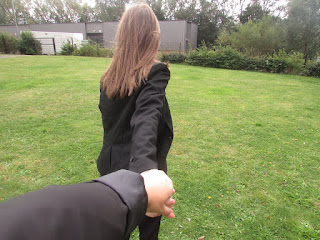Camera Shots
Point Of View
the close-up shot of the character works as a reference for the point of view shot as the audience sees the characters viewpoint of an object of significance or their view of the action. the purpose of this shot is to engage the audience with the character's motives.
Establishing/ Extreme Long Shot
Usually an exterior shot which establishes a time and location of the production. Any character or characters may just be visible to the audience This is an important shot which is often used at the start of a production to provide the audience with important information regarding the setting for the storyline.


Long Shot
Directors may often follow an Establishing shot with a Long Shot of a character, which enables the audience to see the character from head to toe. This shot allows the audience to understand the relationship between the character and their environment.
.
.

Mid Shot
A mid shot may often follow a long shot and provides the audience with the character from the waist up. By using a mid shot the director is ailing the audience to become more familiar with their character and their motivations in the narrative as they are now able to see the characters facial expressions and body language in more detail.


Extreme Close Up
an extreme close up draws the audience further into the character's emotions as their attention is focused completely on the character. this can be very intense for the audience as it is an unfamiliar viewpoint and they are not able to see any other action taking place around the character. the shot will often frame the character's eyes or it may focus on an object of significance to the narrative, such as a pair of glasses or a letter.
Two Shot
the two shot is a shot with two characters in the frame. it expresses their relationship with eachother and the action they find themselves in. it is often used in tv chat shows.
Over The Shoulder
the over the shoulder shot enables the audience to view the action or object of significance from over the shoulder of the character. this is often used during a conversation or interaction between two characters. the camera will show the action from over the shoulder of each character during the dialogue, this then becomes an angle reverse angle shot.
High Angle
a high angle shot is when a camera is placed at an angle which points down towards the character, this shot gives the audience a sense of vunerability and can often be used in scences of confrontation at moments on screen when characters are defeated.
Low Angle
a low angle shot is when the camera is placed at an angle which points up towards the character, this gives the audience a sense of the characters power. low angle shots often make the audience feel vunerable to the character on the screen.
Panning
A pan shot or panning shot is when you turn the camera on a fixed head. It is a technique where you follow a moving subject, and you can shoot this with a slower shutter speed to create a feeling of speed or action.
Tilt Shot
Tilting is a cinematographic technique in which the camera stays in a fixed position but rotates up/down in a vertical plane.

Comments
Post a Comment